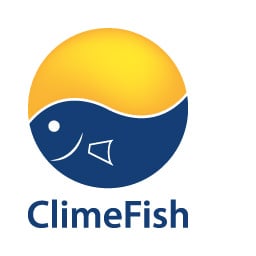Vietnam – Strongly exposed to climate change

Nha Trang University in Vietnam is one of the partner institutions in the EU ClimeFish project. According to the Climate Change Vulnerability Index, Vietnam is among 30 countries in the world that is at ‘extreme climatic risk’. The country is frequently exposed to natural disasters, including storms, floods, and droughts. Over the last 50 years, the average temperature has increased by 2-3°C and the sea level has risen by 20cm. Coastal communities are considered at highest risk because of their reliance on natural resources for their livelihood, particularly in aquaculture and fisheries. Floods and storms in the coastal provinces damage approximately 60,000 houses every year, and this makes it more difficult for vulnerable households to escape poverty. The recent typhoon, Damrey, in November 2017, which caused over 700 billion dongs damages in Khanh Hoa province, is evidence of such climatic event. The storm destroyed 993 houses, damaged 97,851 houses, blew the roofs off 241,520 others. The loss of human lives was significant with 27 death, five individuals unaccounted for, and 89 injured. Physically, the storm sunk and washed away 1,141 boats and fishing gears. It also damaged 44,320 aquaculture cages and 3,270 rafts together with infrastructure, schools and hospitals.
Under the IPCC high emission scenario, it is projected that by the end of the 21st century, the average temperature in Vietnam could increase by 3.7°C and the sea level could rise by up to 95cm. This means that about 22 million Vietnamese will lose their homes and 45% of agricultural land in the Mekong Delta will be submerged in seawater. Therefore, it is important to set up climate adaptation strategies to mitigate risks from climate change events. The adaptation strategies should enhance community resilience, and create sustainable livelihoods for vulnerable communities that are likely to be impacted by climatic events.
Fishers and aquaculture farmers suffer financially and experience significant losses from natural disasters, temperature increase, salt-water intrusion and water quality and availability. A number of factors, however, increase climate change vulnerability of fishers and aquaculture farmers in Vietnam. Fishers who use traditional boats, often without motors or navigational technology, and function along a radius a few miles offshore can operate fewer days a year and are unable to withstand inclement weather conditions. These fishers and aquaculture farmers lack access to risk management tools (weather forecasts, insurance…). Aquaculture farmers often apply simple technology to capture weather forecasts and are often reliant on natural ecosystems (i.e. collection of wild seed) and therefore less resilient to natural disasters. The fisheries management practices have been ineffective shielding them form exposure of climatic events even if they focus on applying the ecosystems approach to fisheries management and aquaculture. Exposure to natural hazards and vulnerability to climatic events enhance the potential for and the magnitude of negative climate change impacts. Hence it is important that fishers and aquaculture practitioners receive hands-on training either directly or indirectly from Nha Trang, Khanh Hoa province located in the southern coast of Vietnam to prepare them to work with rural coastal communities to enable them to prepare adaptation strategies to minimize the potential risks associated to climatic events. The participants of such training will include representatives from Department of Agriculture and Rural Development and Department of Natural Resource and Environment of Khanh Hoa province, leaders of local coastal districts/communities (Van Ninh, Ninh Hoa, Cam Lam and Nha Trang ) and fishers and aquaculture farmers from these coastal districts/communities; and researchers from Nha Trang University and other research institutes.
By involving in the ClimeFish project, the Vietnamese partner is looking forward to studying various aspects of climate change. Encouraging students, professors, community leaders and members, and policy makers to be involved in dialogue and discussions on climate change events. The project is also adopting hands on approach on how to encourage the development of climate adaptation plans for fisheries and aquaculture. Fishers and aquaculture farmers are among the most impacted by climate change events. Before the plans can be developed, studies on willingness to pay for insurance, community adaptation measures, and investment analysis of measures for risk minimization of climate change events are executed jointly with other collaborating partners.
ClimeFish will provide practical recommendations as well as voluntary guidelines that can assist fisheries and aquaculture sector in building the management plan to enhance the resilience to climate change impacts. Even though the ClimeFish project mainly focuses on European countries, the procedures, guidelines, and recommendations developed in the project are still relevant and useful for Vietnam.
Below are some images from Nha Trang university:

Ngoc and Sturgeon in Da Lat

Professors and Experts at Sturgeon ponds in Da Lat

Students & Teachers at Shrimp pond after the Damrey Ninh Hoa District

Students & Teachers at Tilapia ponds in Van Ninh

Sturgeon ponds in Da Lat

White Leg Shrimp’s grow rate is slow
